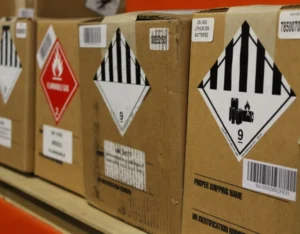CFD Trading Regulations and Compliance: Navigating the Legal Landscape

CFD trading has become increasingly popular among retail and institutional investors due to its flexibility and potential for high returns. However, this potential comes with significant risks, which is why regulations and compliance measures are critical components of the trading landscape. Understanding these regulations is not just a legal necessity but also a strategic advantage. This article dives into the global framework of CFD trading regulations, broker compliance obligations, trader responsibilities, and the evolving nature of legal oversight in this dynamic market.
Understanding CFDs and Regulatory Challenges
A Contract for Difference, commonly known as a CFD, is a financial derivative that allows traders to speculate on the rising or falling prices of fast-moving global financial markets such as shares, indices, commodities, currencies, and treasuries. One of the primary reasons traders are drawn to CFDs is the ability to use leverage, which means opening positions larger than their account balance.
However, leverage is also what makes CFDs highly risky, particularly for inexperienced retail traders. The possibility of losing more than the initial investment, market volatility, lack of ownership of the underlying asset, and complexity of products have prompted regulators worldwide to step in. Their goal is to protect consumers, prevent fraudulent practices, and maintain financial market stability. As a result, CFD trading is one of the most heavily scrutinized segments of the retail trading industry. Check out ADSS for more information.
Global Regulatory Landscape for CFD Trading
The European Securities and Markets Authority (ESMA) has taken a firm stance on CFD regulation. In 2018, it introduced temporary intervention measures that eventually became permanent in many EU member states. These include strict limits on leverage, with ratios ranging from 30:1 for major currency pairs to as low as 2:1 for cryptocurrencies. ESMA also mandates negative balance protection to prevent traders from losing more than their deposit. Brokers are required to display standardized risk warnings and are prohibited from offering bonuses or incentives to retail clients. These measures are aimed at increasing transparency and reducing the number of retail investors suffering significant losses.
Post-Brexit, the Financial Conduct Authority (FCA) continues to uphold similarly rigorous standards for CFD trading in the UK. The FCA’s rules mirror those set by ESMA, including leverage caps and mandatory risk disclosures. The UK regulator has also prioritized clamping down on unauthorized firms and scam brokers. A unique focus for the FCA has been the enforcement of marketing rules to prevent misleading promotions and ensure that only firms with proper authorization can target UK residents. The emphasis is on creating a level playing field that supports fair treatment of retail traders while encouraging innovation among compliant brokers.
In regions like the UAE, Singapore, South Africa, and Japan, the regulatory environment for CFD trading varies but follows a similar trajectory toward increased oversight. In the UAE, the Securities and Commodities Authority (SCA) has established a licensing regime for CFD providers to ensure accountability and financial soundness. Singapore’s MAS mandates strict compliance and capital adequacy, while Japan’s FSA enforces particularly conservative leverage limits and tight operational controls. These countries reflect how global oversight is converging toward a balance between innovation and protection.
Key Compliance Requirements for Brokers
To operate legally, CFD brokers must meet a range of compliance requirements that vary depending on the jurisdiction but share several common threads. Obtaining a regulatory license is the first step, involving a thorough vetting process that examines financial stability, management structure, and business models. Licensed brokers are typically subject to ongoing capital adequacy requirements, meaning they must maintain sufficient funds to cover client liabilities and operational expenses.
KYC and AML protocols are mandatory in virtually all regulated environments. Brokers must verify the identity of each client, assess their financial knowledge, and monitor transactions for suspicious activity. This helps prevent money laundering and protects the integrity of the financial system.
Client fund segregation is another cornerstone of regulatory compliance. Licensed brokers are required to keep client funds in separate bank accounts to ensure that they are not used for operational expenses or in the event of bankruptcy. Transparency is further supported through mandatory disclosure statements, periodic audits, and real-time reporting to regulators.
Trader Responsibilities: Staying on the Right Side of the Law
While brokers carry the burden of regulatory compliance, traders are not exempt from legal obligations. One of the most important steps a trader can take is to choose a broker that is fully regulated in a reputable jurisdiction. This not only ensures compliance with the law but also protects traders from scams, unfair pricing, and loss of funds.
Traders must also comply with tax laws. Depending on where they reside, trading profits may be subject to capital gains or income tax. It is essential to maintain accurate records and consult a tax professional if needed. Lastly, using leverage and trading tools responsibly is key. Exceeding regulatory limits or participating in prohibited trading practices could lead to account suspension or legal action.
Conclusion
CFD trading offers exciting opportunities, but only when approached with caution and a firm understanding of the regulatory landscape. From global regulatory frameworks and broker obligations to trader responsibilities and the role of technology, every aspect of CFD trading is intertwined with legal compliance. As financial markets continue to evolve, staying informed about regulatory changes will be critical.







